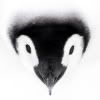Faraway volcanic eruptions now detected in a flash
A University of Washington-based network that monitors lightning around the globe has an unexpected new use: Detecting volcanic eruptions that could be hazardous to aviation.
Seattle Times science reporter
JON PALL VILHEMSSON / AP
Lightning adds flash to ash: In this April 18 photo, lightning is seen amid the lava and ash erupting from the vent of Iceland's Eyjafjallajökull volcano. The power of volcanic ash to play havoc with air travel was underscored as flights across Europe were grounded for nearly a week.
Information
World Wide Lightning Location Network: http://wwlln.net
![]()
A University of Washington-based network that monitors lightning around the globe has an unexpected new use: detecting volcanic eruptions that could be hazardous to aviation.
In its first months of test operations in Alaska and the Russian Far East, the system spotted two eruptions a full hour before they showed up on satellite images. That could mean valuable warning time for aircraft, whose engines can stall when clogged with volcanic ash.
"If we're able to get an extra 30 or 60 minutes more of a heads-up, it could be a real contribution," said volcanologist John Ewert, of the U.S. Geological Survey's Cascades Volcano Observatory.
The power of volcanic ash to play havoc with air travel was underscored this year when the eruption of Iceland's Eyjafjallajökull volcano grounded flights across Europe and the North Atlantic for nearly a week.
It's well-known that the roiling clouds unleashed by explosive eruptions generate lightning, but the idea of monitoring those bolts didn't take root until Ewert connected with UW space-sciences professor Robert Holzworth a few years ago.
"It's a cool case of scientific serendipity," Ewert said.
Building on the work of scientists from New Zealand, Holzworth has managed the World Wide Lightning Location Network (WWLLN) since 2004. He expanded it from a handful of stations to 52 around the globe — including one on the roof of the UW's Atmospheric Sciences Building.
"We've been growing by leaps and bounds," said Holzworth, who uses the lightning data for his studies of the ionosphere — the uppermost atmospheric layer.
The simple antennas pick up lightning's distinctive, low-frequency radio signature. The signals can propagate halfway around the world and sometimes are audible as crackling on your car radio.
The network detects only about 10 percent of all lightning, but up to 40 percent of the most powerful strokes. Strokes are pinpointed within three to six miles, about the size of an average thunderstorm. More than 90 percent of all thunderstorms show up in the data, mapped daily on the website http://wwlln.net.
"We locate things in real time," Holzworth said.
Of more than 3 million lightning strokes logged every month, only a tiny fraction are from volcanoes. But those are fairly easy to spot, because they're usually not associated with a storm, Holzworth explained.
With satellites circling the globe and seismic networks listening for rumbles, it might seem unlikely that a major volcanic eruption would take anyone by surprise. But many remote volcanoes — including more than 200 in Alaska and the Russian Far East — have few or no instruments nearby. Scientists can detect vibrations from a distance but can't always tell what's happening.
"If you see the ground rumbling, you don't necessarily know if magma is moving around below or whether an explosive event is going off," Holzworth said.
Satellites can't spot ash pouring from a volcano until it pokes through the clouds, and orbital paths create gaps in satellite coverage.
Add in foul weather and darkness, and volcanic eruptions can sneak up on you, Ewert said.
His spark of inspiration came in 2008, when Chaiten volcano erupted in southern Chile. With few instruments on the ground, seismologists had a hard time forecasting the event — but spectacular photographs of the lightning storm popped up on the Web almost immediately.
Ewert checked the lightning network and saw it, too, had detected the flashes.
After an eruption at Alaska's Mount Redoubt in 2009, Ewert and Holzworth started sorting through the lightning data archives. They found the network detected all major, explosive eruptions, and about half of the medium-sized ones.
"These are eruptions that can put enough ash into the atmosphere at jet cruising altitudes that they can be a hazard to aviation," Ewert said.
With planes traveling 500 mph, even a few minutes extra warning could help avert situations like the one in 1989, when a Dutch airliner lost all four engines after flying through a plume from Redoubt. Pilots were able to restart two engines and land safely in Anchorage.
A USGS analysis found 94 verified airplane-ash encounters since 1953. None led to crashes, but aircraft damage was severe in several cases.
The lightning network now is continuously monitoring more than 1,500 volcanoes worldwide. The test in Alaska and the Russian Far East is focused on an experimental warning system, which issues automatic e-mail alerts when an eruption is detected.
More than 300 flights a day carry 30,000 passengers over the volcanically active region, Ewert said.
The scientists started scanning for volcano-associated lightning in September. Within a month, they detected an eruption of Russia's Shiveluch volcano before satellites saw it. The same thing happened Dec. 12, when Kizimen volcano on Russia's Kamchatka Peninsula let loose.
There were also some false positives early on, but software improvements are making mistakes less likely. The system still doesn't work well in the tropics, where frequent thunderstorms make it harder to identify lightning from volcanoes. Adding instruments in those areas would help boost the system's overall performance, Holzworth said.
He and Ewert hope to see the warning system expanded globally.
"It's another tool in the toolbox," Ewert said. "We're hoping it will be useful, not only to us, but around the world."
Source
--
Got Penguins?
Penguin News Today
The Science of Penguins
The Gentoos are back! Come see them on live cam at:
Gentoo Penguins of Gars O'Higgins Station, Antarctica

__._,_.___



No comments:
Post a Comment